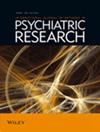Validation of the Eight-Item Paranoid Thoughts Scale (GPTS-8) in Tunisian Arab Adults
Abstract
Background
Growing research indicated that it is highly valuable and clinically beneficial to quantitatively measure and detect the potential presence of paranoid thinking. Among the various existing self-report instruments to measure paranoia, the Green et al. Paranoid Thoughts Scale (GPTS) was recommended as having the most well-defined, clearly articulated construct underlying its items, and the strongest psychometric qualities in general and clinical population samples. Yet, the psychometric performance of the GPTS remains unknown in the Arab language and culture. To address this gap, our study aimed to explore the psychometric properties of an Arabic translation of the shortest version of the scale (i.e., the GPTS-8).
Methods
A cross-sectional study was conducted. Data were collected during the period September 1st 2024 to January 31th 2025. A total of 552 Arabic-speaking general population adults from Tunisia aged 25.81 ± 4.86 years participated.
Results
Analyses provided support for a bidimensional model, with a first dimension referring to ideas of persecution and a second one corresponding to ideas of reference. The internal consistency reliability coefficients were high, with both Cronbach's alpha and McDonald's ω reported to be 0.83 for ideas of persecution and 0.83 for ideas of reference. Measurement invariance was established for both subscales, implying that the Arabic GPTS-8 measures the same underlying construct of paranoia in the same way across male and female respondents. Finally, paranoia scores correlated positively with psychotic experiences scores, indicating convergent validity, as well as with depression, anxiety and insomnia scores, supporting the concurrent validity of the scale.
Conclusion
By translating and validating GPTS-8 for the first time in Arabic, this study contributes to rendering the tool available to a broader array of clinicians and researchers who work with Arabic-speaking people. We believe the new Arabic version of the GPTS-8 will provide further encouragement to research and development in this yet-unexplored field among Arabic-speakers.


 求助内容:
求助内容: 应助结果提醒方式:
应助结果提醒方式:


